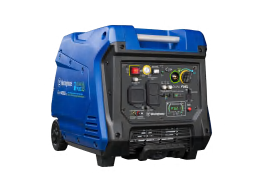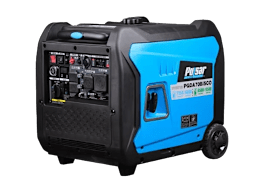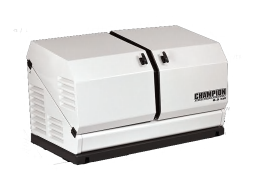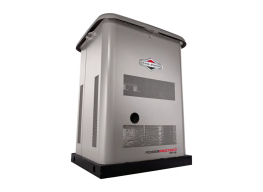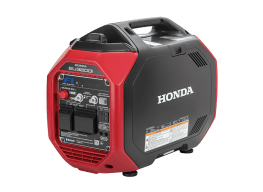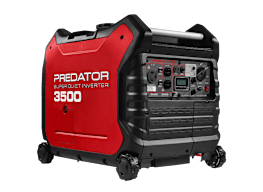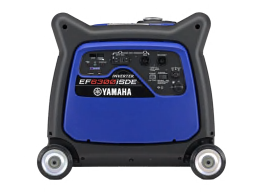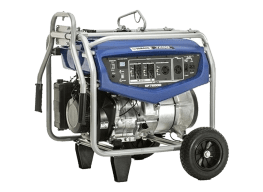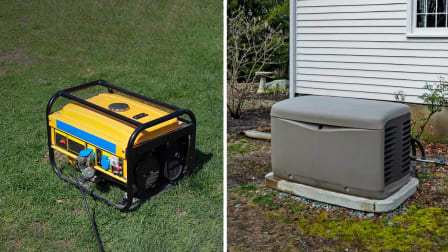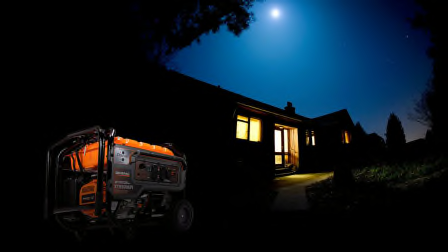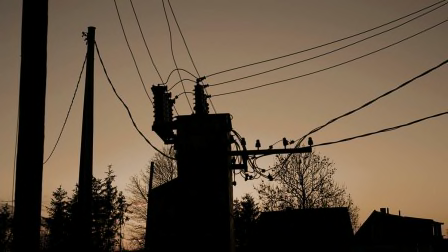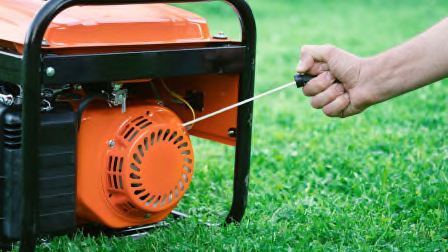Why a Portable Generator Needs a Transfer Switch to Safely Power Your Whole House
Plus an alternative that could save you hundreds of dollars
When you shop through retailer links on our site, we may earn affiliate commissions. 100% of the fees we collect are used to support our nonprofit mission. Learn more.

Sales of portable generators tend to spike around major storms. But getting a portable generator up and running in a hurry often means bypassing the recommended installation procedure and making do with extension cords.
That’s why it’s best to shop for a generator before you really need one. It gives you time to get familiar with the model, stock up on gasoline, and more to the point, hire an electrician to install a transfer switch—a device that allows you to use your generator to power entire circuits in your house—without the hassle and potential dangers of relying on extension cords.
How a Transfer Switch Works
Think of a transfer switch as a miniature circuit breaker panel that draws electricity from your generator instead of the power company. When electric service is out in your area, you can plug your portable generator into an outdoor outlet that’s connected, through the house, to a transfer switch inside.
The switch itself is installed by an electrician, usually alongside your main circuit breaker panel. The electrician can help you figure out which circuits you want to power during an outage. Heating and cooling equipment are essential, as are water heaters and well pumps.
Without this switch installed, you need to run outdoor-rated extension cords from your generator into the house. And yes, multiple cords: Because extension cords can be overloaded, you need a dedicated cord for anything that draws a lot of power, like a space heater or window air conditioner.
Keep in mind, too, that without a transfer switch, you can power only electronics that have a standard plug. You won’t be able to connect anything that’s hardwired to your circuit panel, like a furnace or an air conditioner compressor.
You’re also out of luck if you have an electric range or dryer, because both use large, 220-volt, four-prong plugs. A transfer switch allows you to power any of those items—while skipping the extension cords.
While a transfer switch boasts both safety and convenience, it comes at a cost. Budget between $500 and $1,500 for the switch, including installation, which usually takes less than a day.
And plan early—even if you already have a generator, it can be hard to find an electrician for this kind of a job when there’s a big storm in the forecast.
A Cheaper Option: The Interlock Device
There’s also a less expensive alternative to a transfer switch, called an interlock device.
The idea is similar: When the power goes out, you plug your generator into the same outdoor outlet. But rather than connecting to a transfer switch, the outdoor outlet connects directly to your existing circuit panel.
Think of the device as a metal bracket installed on the panel. When in place, the interlock covers the main cutoff switch, so you can’t turn it on while the generator is running. Once utility power is back, you slide the interlock back to its original position. Thus, power flows in only one direction.
An electrician can tell you whether an interlock will work with your electrical system and whether it meets local building codes. You’ll have to pay $50 to $150 for the kit, plus $400 to $800 for labor, which is significantly less than you’d pay for a transfer switch.
Technically, you can connect a generator to your circuit panel without an interlock, but it’s dangerous and, in many cases, illegal. CR never recommends this approach for two reasons.
First, if you’re powering your house with a generator and the power comes back on from the street, you can overload the wiring and fry your electronics.
Second, if you’re running a generator to your panel without an interlock device, you can send electricity back into power lines as utility crews are working on them, potentially exposing essential workers to an electrocution risk.
How to Avoid Carbon Monoxide Dangers
To reduce the risk of carbon monoxide poisoning, some new generators feature a built-in sensor that triggers an automatic shutoff if the CO in an enclosed space builds up to dangerous levels; some models emit less CO in the first place. Test data from CR shows that these safety features are likely to save lives.
Portable generators have to pass our CO Safety Technology test before CR recommends them. But our findings reveal potentially life-threatening gaps that the automatic shutoff fails to address, reinforcing why it’s critical for consumers to follow safety guidelines.
- Never operate a generator indoors, including your garage.
- Position a portable generator at least 20 feet from your home.
- Direct the exhaust away from your house, as well as any windows, doors, air conditioners, and other structures.


Top-Rated Portable Generators That Can Power Your House
How to prepare your home before a storm.


















